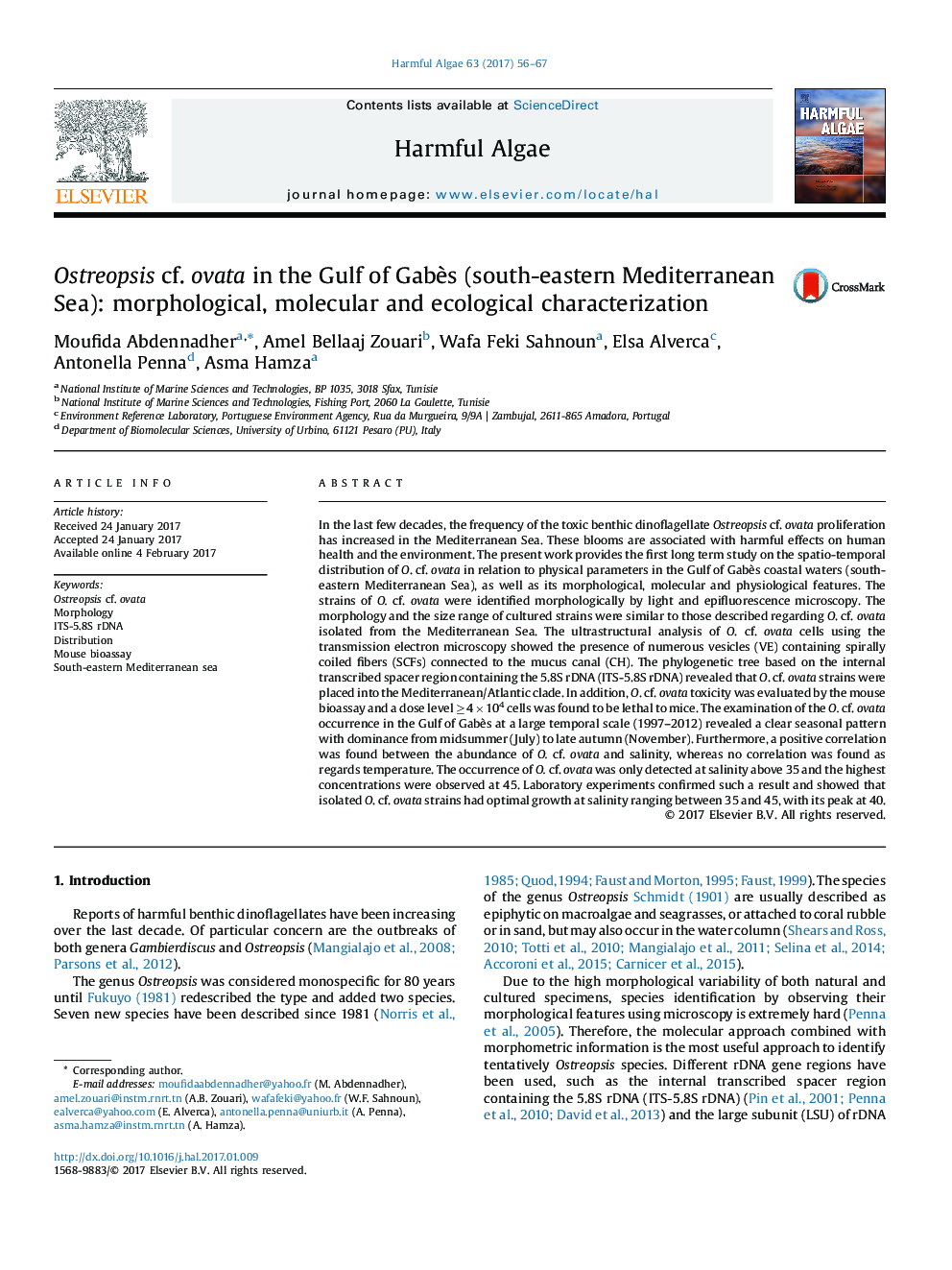| کد مقاله | کد نشریه | سال انتشار | مقاله انگلیسی | نسخه تمام متن |
|---|---|---|---|---|
| 5765798 | 1626909 | 2017 | 12 صفحه PDF | دانلود رایگان |

In the last few decades, the frequency of the toxic benthic dinoflagellate Ostreopsis cf. ovata proliferation has increased in the Mediterranean Sea. These blooms are associated with harmful effects on human health and the environment. The present work provides the first long term study on the spatio-temporal distribution of O. cf. ovata in relation to physical parameters in the Gulf of Gabès coastal waters (south-eastern Mediterranean Sea), as well as its morphological, molecular and physiological features. The strains of O. cf. ovata were identified morphologically by light and epifluorescence microscopy. The morphology and the size range of cultured strains were similar to those described regarding O. cf. ovata isolated from the Mediterranean Sea. The ultrastructural analysis of O. cf. ovata cells using the transmission electron microscopy showed the presence of numerous vesicles (VE) containing spirally coiled fibers (SCFs) connected to the mucus canal (CH). The phylogenetic tree based on the internal transcribed spacer region containing the 5.8S rDNA (ITS-5.8S rDNA) revealed that O. cf. ovata strains were placed into the Mediterranean/Atlantic clade. In addition, O. cf. ovata toxicity was evaluated by the mouse bioassay and a dose level â¥Â 4 Ã 104 cells was found to be lethal to mice. The examination of the O. cf. ovata occurrence in the Gulf of Gabès at a large temporal scale (1997-2012) revealed a clear seasonal pattern with dominance from midsummer (July) to late autumn (November). Furthermore, a positive correlation was found between the abundance of O. cf. ovata and salinity, whereas no correlation was found as regards temperature. The occurrence of O. cf. ovata was only detected at salinity above 35 and the highest concentrations were observed at 45. Laboratory experiments confirmed such a result and showed that isolated O. cf. ovata strains had optimal growth at salinity ranging between 35 and 45, with its peak at 40.
Journal: Harmful Algae - Volume 63, March 2017, Pages 56-67